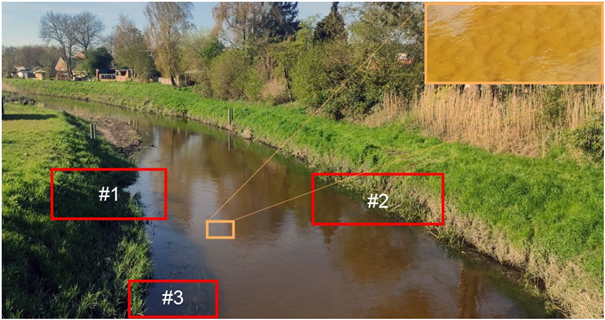Vegetation is ubiquitous in environmental open-channel flows (e.g., rivers, tidal marshes, etc) and provides several ecosystem services. As such, its presence is desirable; however, at the same time it is a source of drag that affects the flow, which can have consequences for e.g., increased floods. As Civil Engineers, we need to be able to model the vegetation-induced flow resistance not only accurately, but also efficiently. In current practice, vegetation drag is either modelled by using an equivalent Chezy coefficient in 2D shallow water equation models (e.g., with the Baptist equation), or by resolving the flow around each individual vegetation stem with 3D CFD tools, such as OpenFOAM. The former option is easy to use but can be inaccurate, while the latter is accurate but requires a tremendous amount of computational power. This project intends to bridge the gap between these two approaches.
In the last two decades there have been many experimental studies that generated analytical semi-empirical expressions of the vegetation drag (e.g., Liu et al., 2022 for riparian vegetation). In this project, you will simulate the vegetation drag by incorporating drag equations from the literature to the momentum equation of the flow in the open-source CFD tool OpenFOAM. In this way, the flow-vegetation interaction model will be orders of magnitude faster compared to models that resolve the flow around each vegetation stem. Examples of this approach for submerged vegetation are the studies of Souliotis and Prinos (2011a, 2011b). After developing and validating the model with studies from the literature, you will use it to explore different cases of flow-vegetation interaction for management purposes. For example, you can investigate how bank vegetation affects the flow (e.g., Denkers, 2023) (Figure 1) or how different vegetation patches interact with each other (e.g., Kitsikoudis et al., 2020; Geurts, 2022). You are free to extend these suggestions to applications of your interest.

Figure 1 Different types of riparian vegetation affecting the flow in the River Dinkel (obtained from Denkers, 2023)
We are looking for a student with strong background on environmental fluid mechanics and numerical modelling. We will support you with incorporating the additional terms in the OpenFOAM source code, but you still need to have affinity with numerical modelling and environmental flows to develop and handle the model(s).
References
- Denkers, B. (2023). Flow-Vegetation Interactions at Vegetated Riverbanks. Master thesis, University of Twente.
- Geurts, M. (2022). Numerical analysis of flow characteristics near neighbouring vegetation patches of different densities. Master thesis, University of Twente.
- Kitsikoudis, V., Yagci, O., Kirca, V. S. O. (2020). Experimental analysis of flow and turbulence in the wake of neighboring emergent vegetation patches with different densities. Environmental Fluid Mechanics, 20, 1417 – 1439. https://doi.org/10.1007/s10652-020-09746-6.
- Liu, C., Yan, C., Shan, Y., Guo, Y. (2022). An exponential-based model for predicting velocity fields in partially vegetated channels. Journal of Hydraulic Research, 60 (6), 864–879. https://doi.org/10.1080/00221686.2022.2067084.
- Souliotis, D., Prinos, P. (2011a). Macroscopic Turbulence Models and Their Application in Turbulent Vegetated Flows. Journal of Hydraulic Engineering, 137 (3), 315 – 332. https://doi.org/10.1061/(ASCE)HY.1943-7900.0000307.
- Souliotis, D., Prinos, P. (2011b). Effect of a vegetation patch on turbulent channel flow. Journal of Hydraulic Research, 49 (2), 157 – 167. https://doi.org/10.1080/00221686.2011.557258.




